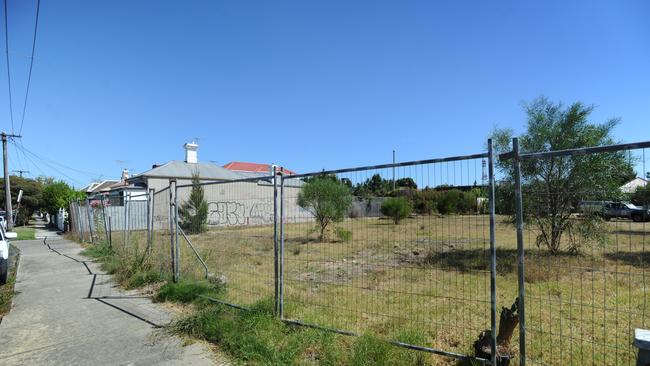
The higher-than-expected fall in the March home loans is merely a pointer to a looming crisis. This means that whoever wins government on May 18 will face a severe economic downturn because home building development is an Australian employment pillar. The assumptions behind the policies of both parties do not take into account this looming catastrophic event.
And making the situation even more dangerous for the nation is that whoever wins the lodge on May 18 will not see the evidence of the crash in the statistics until 2020 because the industry still has a mountain of back work to complete. This work will be take at least until the end of calendar 2019 and perhaps into the early months of 2020. Then we fall off a cliff.
While both parties are unprepared, the ALP’s negative gearing and retirement/pensioner tax policies would make the situation much worse.
To be fair, in both Victoria and NSW there is extensive infrastructure investment taking place which will cushion the residential collapse but it will still be serious.
But to add to the danger there are signs the Chinese student demand is set to go into decline in the wake of the US trade war. If that happens, it will reduce rental and purchase demand for inner city apartments in Sydney and Melbourne. We will know whether Chinese student demand has turned down at about the same time as the housing crunch hits.
The Coalition’s low-deposit housing scheme is an important first step to curb the slump but it’s nowhere near big enough. It was encouraging that the ALP almost immediately copied it. However, the word I hear is that the Coalition announcement was a reaction to the ALP’s successful intergenerational attack. The ALP are attracting too many younger voters and the Coalition scheme — based on a similar and incredibly successful WA scheme — was an attempt to curb the young voting trend rather than any understanding of the looming crisis.
Australians have every reason to be deeply unhappy that our economic information system has let us down so badly on the eve of an election.
The looming problem was evident in the final months of 2018 but at that time the economists in the Reserve Bank bunker at Martin Place had no idea of the damage being created by the regulators APRA and ASIC and, accordingly, their economic forecasts were nonsense, as has been shown by recent amendments. The lack of co-ordination and understanding between our regulators became evident at the dramatic FINSIA lunch last November when representatives of all three bodies were on the same podium.
The Reserve Bank is starting to understand the problem and has lowered its economic forecasts and is talking about reducing interest rates but as Westpac has tried to explain to those in the Reserve Bank bunker, lower interest rates will not help because of the way the downturn has been engineered.
My regular readers are well aware of what has caused collapse in developmental housing but given the election timing its worth repeating how the perfect storm developed. The boom was fanned by strong population-driven housing demand, which included Chinese demand. At the same time, in the boom banks were “generous” with credit often using loose credit standards with fudged asset and income figures. Negative gearing added to the mix and there is no doubt Australia would have been much better placed today if Chris Bowen’s negative gearing policies at the last election had been adopted.
With a Royal Commission coming, APRA and ASIC decided to tighten lending standards to improve bank balance sheets which effectively lowered the amount people could borrow by 20 to 30 per cent. Interest-only loans for investors were reduced to token levels so there are billions in loans where people will face higher repayments when the interest only agreements end over the next two years or so.
The Chinese pulled back their buying causing a 20 to 30 per cent fall in Sydney apartment values and similar falls in Melbourne, including houses in suburbs like Box Hill. Just as frenetic was the outer suburban housing land boom and prices sky rocketed as investors bought blocks on 10 per cent deposit to allow the developers to undertake the subdivisions. That market has collapsed and highly leveraged desperate developers have reduced prices causing those who still owe money on higher priced blocks to demand price reductions. Others are just trying sell. Many bought multiple blocks on 10 per cent deposit. With that land collapse has come extreme valuer and bank nervousness so loans are hard to get.
The ALP’s negative gearing policies have poured petrol onto the flames and orders for new homes industry have slumped in a large number of areas.
Late last year the industry could see the crisis coming and in October three families behind major builder/developers started a low deposit scheme using family money to bridge the gap between the bank funding and the low deposit.
They tried to encourage the government or the industry superannuation funds to join the scheme which was modelled on what the WA government has done. The WA government is actually making money on its loans to bridge the deposit gap. The politicians did not grasp the looming problem, which was understandable given that the Reserve Bank and their mates in Treasury are isolated from the real world.
Then six days before the election, Scott Morrison announced a scheme similar to the WA program. Hopefully whoever wins power on May 18 will introduce it quickly and be ready to expand it when they understand the looming crisis.




The suburban land development and residential home building industry in Sydney and Melbourne and most other capitals has collapsed. New orders have fallen to token levels and many of those who bought land are walking away from their contracts.